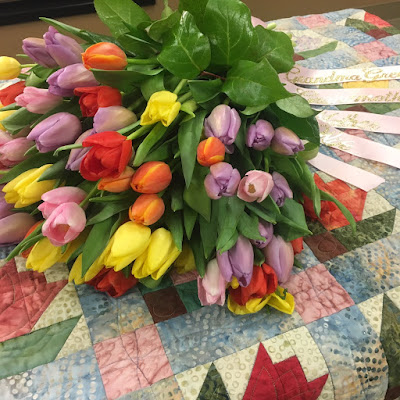When starting multi-block quilts I make about 6 blocks to work out my piecing and pressing decisions, making assembly of blocks, and, later, the top easier. I may try several different sequences before settling on one.
Sometimes the logical piecing/pressing sequence is not the optimal, so I like to sort this out early. Because, once I've made a dozen or so blocks I know I'm not going to go back and re-do them.
Once I figure out my block piecing and pressing sequence I commit. I choose a higher-contrast block as my master block. It is used from then on as a reference for the rest of the block making. I place pieces on the reverse of the block itself to keep me consistent.
In nursing I teach my students to hold the medication package right next to the printed words on the screen/paper to compare and ensure the correct medication is given as our minds play tricks on us and we will read what we think is there and not what is really there.
The same phenomena happens with piecing. We think we have it in the same direction as earlier blocks when we do not.
By having my pieces placed over the master block, I keep my consistency when piecing and pressing.
In these basket blocks I pieced them into quarters. Then placed the quarters over the master block again.
You will see that the final seam is not pressed. In my planning I found that seam would be pressed different directions in alternate rows, so my master block again reminded me to not press that seam.
I try to honor this work-horse block by putting it in a good place in the quilt! This delightful fern block will be the bottom left block.

































